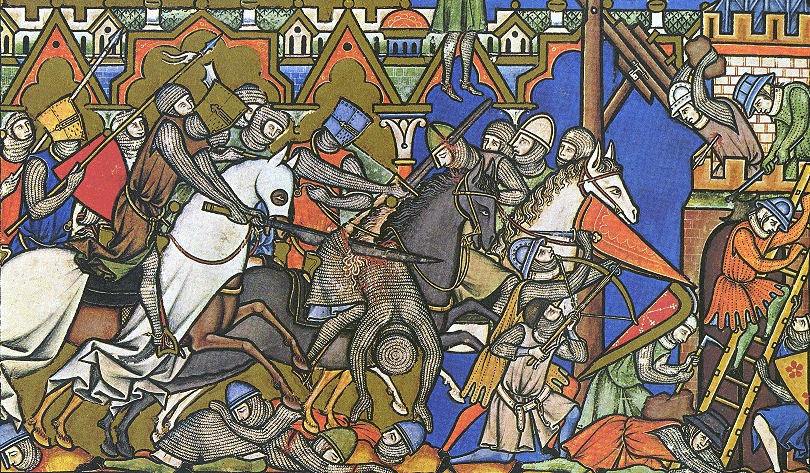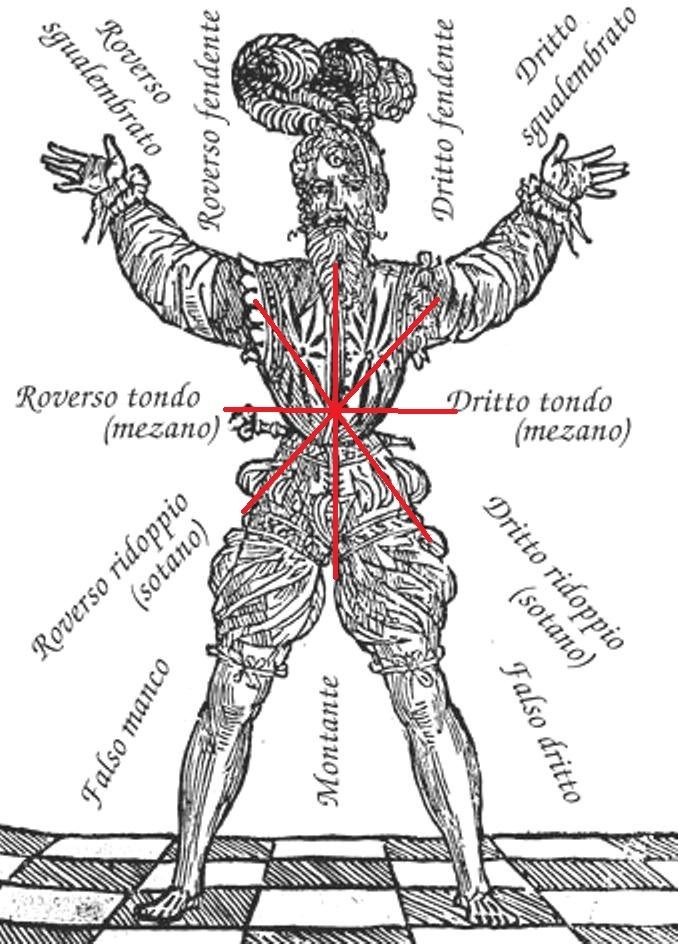The Eight Cuts, Contorted for the Saddle
Now consider:
... which sword blows can and should be thrown from horseback to a mounted rider and a fighter on the ground
As you face forward in the saddle, an immediate obstacle comes into view: your horse's neck. The squalembratti and sotani (descending and rising diagonal cuts) are obviously still available, and these are indeed the most common cuts used in mounted combat. But how do you deliver a tondo, fendente or montante (horizontal and vertical cuts) without cutting your horse's head off?
In fact, all eight cuts are available from the saddle, but only by rotating your torso. This is where that independant seat I harp on about is so important. With your lower body absolutely still and square in the saddle to direct your horse, your shoulders and chest should be able to rotate to deliver horizontal and vertical cuts to an opponent beside you without endangering your horse.
That said, there are some physical limitations. Cuts over the reining hand (ie, on the near side of your horse if you are right-handed) will be more difficult and have less reach and power than those on your sword (off) side. Downward and horizontal cuts on this side to an opponent are awkward, but rising cuts can be quite effective.
With tondi, even though your have twisted your torso to avoid your horse, you still need to take care to limit the follow-through of your cut, especially when cutting forward. Because of this, horizontal cuts are often better delivered high, above your horse's normal head-carriage, and are more useful against mounted opponents than against those on the ground.
Rising cuts on the sword side run the risk of entangling the reins, or worse, hitting your horse in the face. This is especially true of false-edge cuts, and it's a good habit to encourage a slight left flexion in your horse's neck when delivering a rising falso from the right.
Rising cuts are also good first attacks against an opponent on the ground. Approaching with your sword in a low guard protects your horse, and finishing your cut high allows you to follow up with a descending roverso as you pass out of reach.
You won't be expected to demonstrate these cuts from horseback at the Green Spur level. First we want to see that you can perform them without taking chips out of your wooden falsemount's head; and at this level all you need is an awareness of the cutting lines necessary to avoid your horse's body.
Now that you've been visuallizing the spatial qualities of mounted combat, take a look at this image and tell me why you can't always trust mediaeval artists!
next week: keeping your seat
o o o
Coming up
Seeding Party
Sunday March 31st, 10am till ??
Channel your inner mediaeval peasant while you help us lime and reseed our pastures, and create a pile of blackberry bushes. Everyone who comes out to lend a hand will be invited to our bonfire party in April to roast hotdogs & marshmallows!
Comment on this post on our Posterous Blog.
